How to Remove Rust From a Bike Chain
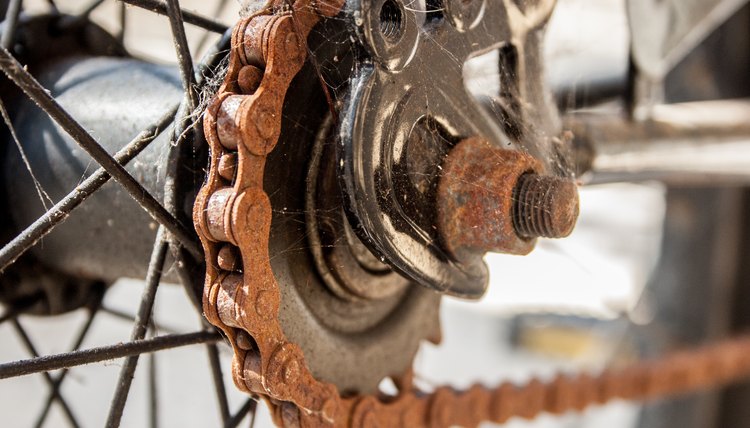
Rust and bike chains have an affinity that seems designed to frustrate even the most fastidious biker. The steel used for bike chains tends to rust, especially when exposed to salt on the roads, which is highly corrosive to steel. Keep rust removal simple with regular cleanings and lubings that help prevent the orange-brown stuff from accumulating. Accumulated rust removal is a much more difficult task and affects the chain’s pliability as well as the bike’s overall performance. Letting rust accumulate usually means making a trip to the bike shop for a new chain.
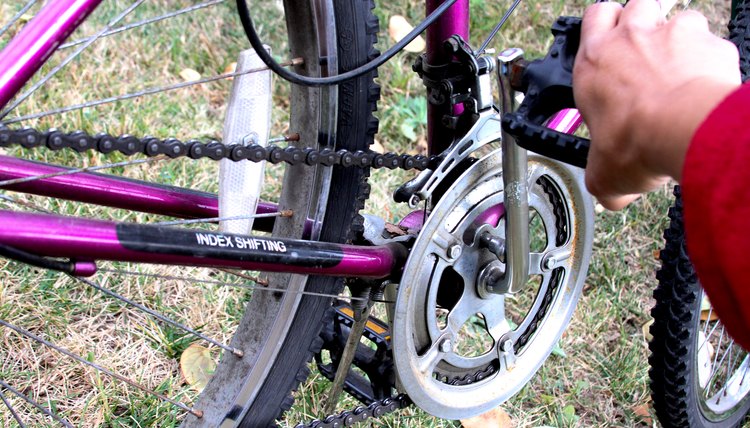
Maryurys Connolly/Demand Media
Inspect the bike chain for dirt and grime before your ride as frequently as possible. If you ride often, weekly inspections allow you to find rust before it accumulates. Stand next to the bike and lift up the rear of the bike. Rotate the foot pedal backward with your free hand to move the chain through several rotations as you look for dirt, rust and grime between links.
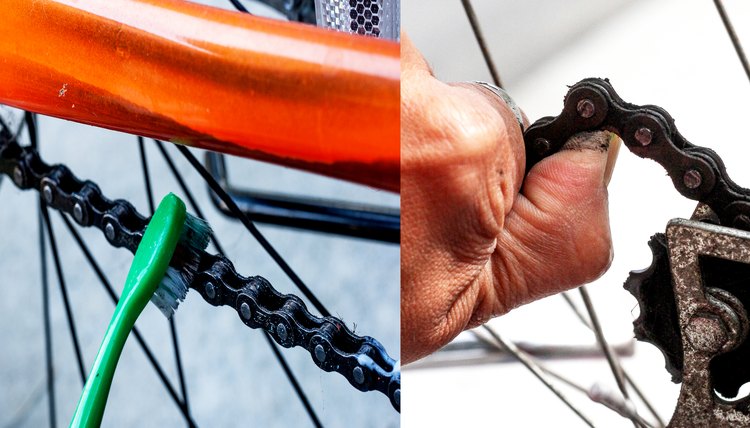
Maryurys Connolly/Demand Media
Clean the chain. Wipe off road gunk with a clean, dry rag and brush out hard-to-reach dirt with a small bristle brush or toothbrush. You might need several different sized brushes to get into tight areas between side plates and center rollers of the chain. Once dirt is removed, look for rust.

Maryurys Connolly/Demand Media
Dampen a plastic or steel scouring pad with lime juice and scrub out surface rust spots from the chain. For hard-to-remove rust, remove the chain for soaking in a citric acid solution, such as lime juice.
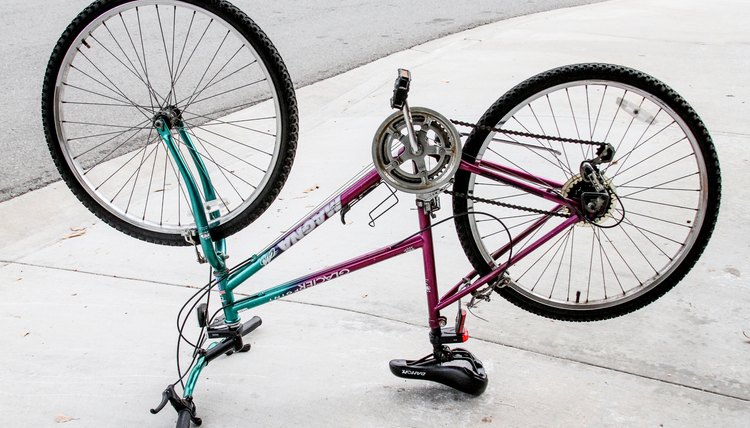
Maryurys Connolly/Demand Media
Turn the bike upside down, setting it on the seat and handlebars. Align the pin of a link removal tool against a pin within a chain link. Crank the tool until the link loosens and pops out. Remove the chain from the cog and front wheel. Soak the chain in a bowl of lime or lemon juice for 60 minutes to two hours.
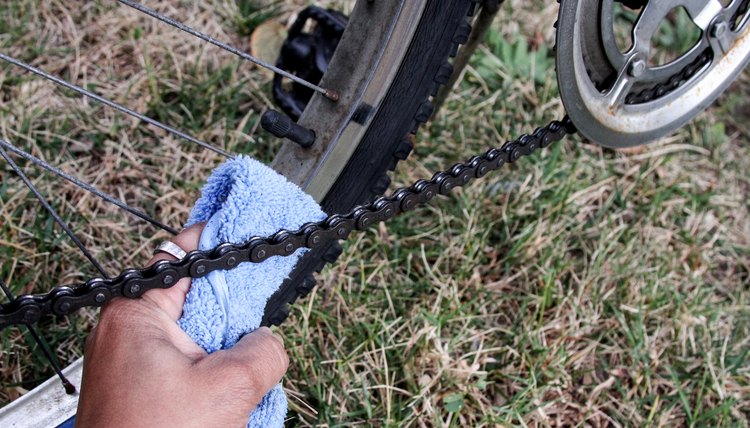
Maryurys Connolly/Demand Media
Dry the chain and reconnect it to the front wheel and cog. Insert the pin between the separated links on the chain. Fasten the tool to the pin and crank it to drive the pin in and reattach the links. Ensure the chain is completely dry before adding lubrication.
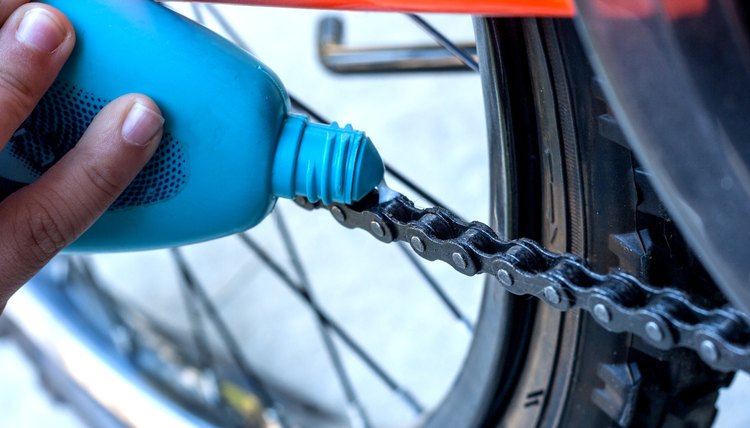
Maryurys Connolly/Demand Media
Add lubrication sparingly, one to two drops at a time, between the side plates and center rollers along the chain. Allow lubrication to be absorbed for several minutes before wiping away the excess. Creating a seal between the bike chain and the elements with proper lubrication prevents rust.
Tips
Cleaning and lubricating the chain after riding in wet conditions can especially help prevent rusting.
Warnings
Don’t allow rust to accumulate. Heavy rust freezes chains and makes them more susceptible to breaks. Avoid using heavy oils to lubricate the chain because it will attract more dirt and grime; opt for a light oil instead.
References
Writer Bio
Tina Boyle has been writing since 2000. Trained as a journalist, she has traveled to over 150 US cities. She specializes in travel, culture, pets, business and social networking and regularly publishes in newspapers, magazines and on Web sites. She received a Bachelor of Arts in writing from the College of Santa Fe.
